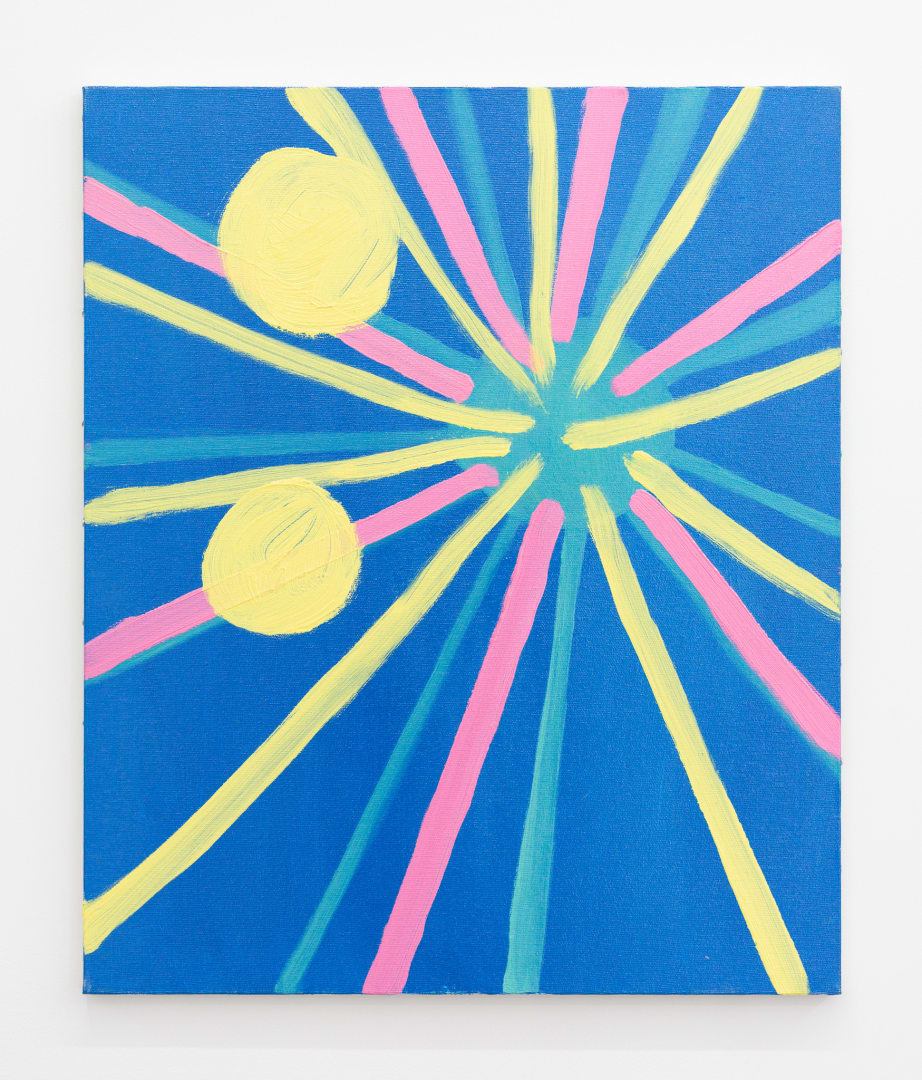Sumer is pleased to present Faint Harbours, recent paintings by Dunedin-based artist and musician Michael Morley. This is the artist’s first solo exhibition at the gallery.
Foremost known as an experimental musician, Morley is a member of influential noise rock band The Dead C (together with Bruce Russell and Robbie Yeats). Formed in 1987, the band has been championed by influential American musician Thurston Moore, along with many others. Morley also established the record labels Precious Metal and Language Recordings, and he produces music under the moniker Gate.
Over these past four decades Morley has maintained a studio practice as a painter that has run concurrent with his musical career. While the importance of music is implied in his paintings, he stresses that his visual art practice is distinct from his musical career.
Morley’s paintings have been shown infrequently in recent years, so perhaps it is not surprising that his work remains somewhat lesser known. Nevertheless, with its defined style and approach, his painting practice remains one that is highly regarded by many within discerning art circles here in Aotearoa, particularly among his artist peers.
Like many painters working internationally, Morley’s approach to painting shuns inherited protocols that set abstraction and representation as oppositional. In fact Morley’s work makes this approach seem entirely outmoded; or rather reveals it to be a notion that is no longer plausible, if indeed it ever was.
The works in Faint Harbours defy clear explanation. Just as Morley’s music foregrounds the instrumental over the vocal, these quasi-representational paintings are defiantly dumb; they defer, they dodge, they’re unwilling to speak. They shrug off narrative, spectacle and conventional good taste. What they impart, however, is an awareness of the contemporary everyday, a reality which is increasingly virtual, mediated, augmented, remote, fantastical, brash. Morley’s paintings are cursory echoes of our current conditions, joyously playful and camp in their palette, form and materiality. His brushwork can appear brutish or even vulgar, other times it is hazy and amorphous, tender and lovely.
These paintings share our social lives. They know the internet—Twitter, news websites and online gaming. And as they reflect Morley himself, they of course riff on a diverse array of music. What may take us off-guard, however, is that they also show a clear understanding of what has come before. They know their history and the paintings which precede them— both Old Masters and abstracts.
Indeed, when Morley speaks of his paintings the conversation ranges wildly. He talks of paint, of canvas, the act of painting, and formal considerations such as composition and form. Yet he also speaks of pictorial landscape, living in Port Chalmers, mainstream film, psychedelics, organ music and even Minecraft. And what is perhaps most striking is the lightness with which he speaks of the paintings themselves, of their fun, their humour; even though some works bear titles which have an altogether ominous and violent tone. Titles like “Who Makes the Nazis?” or “Two Destroyed Towers” read as all too closely tied to current geo-politics and recent history; even if it coincidental—the former is borrowed from the 1982 song by The Fall. As for the latter, we are left to ponder whether it is a reference to 9/11, or borrowed from a computer game or some other song.
Morley also emphasises the importance to allow a painting to remain oblique, to grant it license to be unexplainable. He considers the efficacy of the medium to be inextricable from its denseness and its lack of clarity. By saying this there is no attempt on his behalf to be some idle edgelord, far from it. His paintings embody both sincerity and jest, abjection and beauty. They are problem paintings.
Morley currently teaches at Dunedin School of Art, Otago Polytechnic.


